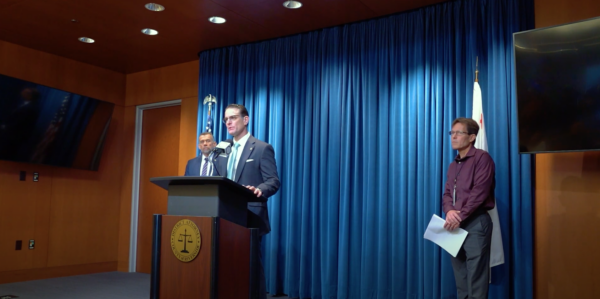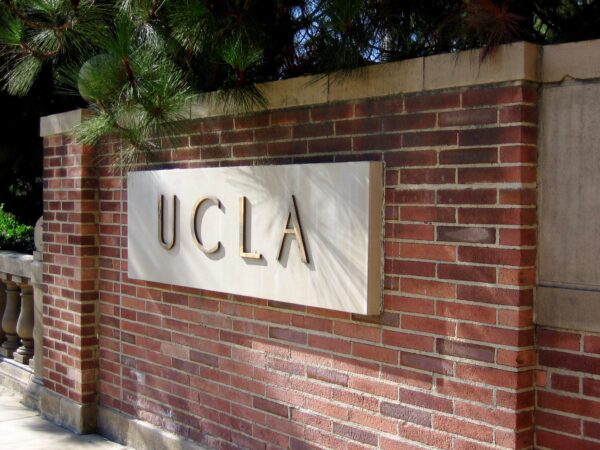Riverside County supervisors Tuesday signed off on a report indicating that county government’s unfunded pension liabilities are growing again, largely due to poor investment returns at the state level, meaning higher near-term costs to the county.
“We’re still making progress, albeit slowly,” county Chief Financial Officer Don Kent told the Board of Supervisors during a hearing on the 2023 Pension Advisory Review Committee report. “Pension costs will continue to increase … for at least the next decade.”
The report said that the county’s retirement apparatus is now 86.6% funded, compared to 76.4% a year ago. The key metric that reflects a sound pension system is considered 80% funded status.
The county’s unfunded pension gap is $1.88 billion, compared to $3.08 billion estimated in the 2022 report, according to PARC. The figures are based on calculations that end in fiscal year 2020-21, the most recent period for which confirmed data is available from the California Public Employees’ Retirement System.
PARC estimated liabilities going forward, indicating the pension deficit will expand to $3.41 billion in the current fiscal year and to $3.43 billion in the following fiscal year. However, those estimates are tentative and might not factor in random events or unforeseen external market pressures.
The county’s current asset base supporting the pension system is $12.2 billion.
There are two main categories in the local pension system — safety and miscellaneous. The safety category covers sheriff’s deputies, District Attorney’s Office investigators, probation agents and others, while the miscellaneous rolls cover clerks, custodians, nurses, social workers, technicians and remaining employees not involved in any law enforcement function.
The amounts required to fund workers’ nest eggs in CalPERS will rise and fall over the next decade, according to PARC. But the report indicated that achieving 100% funded status in the future — possibly by the early 2040s — is within reach, provided there are no damaging hits to the economy.
The biggest influence on pension costs is CalPERS’ investment performance, which in fiscal year 2020-21 boasted the most impressive results of the last decade, with a 21.3% gain in stock market assets, well over the 7% assumed rate of return that had been projected, according to the report.
That impressive performance, however, will be undermined by a nosedive in returns in 2021-22 and 2022-23, according to the report. Losses for 2021-22 have been confirmed at 7.5%.
“We are at the mercy of the California State Legislature and what they want to be politically correct investments, telling the CalPERS board not to invest in certain stocks and bonds,” Board Chairman Kevin Jeffries said. “Each decision that the CalPERS board makes to withdraw from profitable funds has the potential to cause us to have to pay more, because they had not invested in higher paying (assets).”
Poor investment returns going back to the Great Recession will require the county to pay an additional 1% to CalPERS in the next year to cover loses in the safety category, and .2% for miscellaneous, the report stated.
The aggregate contribution rates will be the equivalent of 48% of payroll for the safety category, and the equivalent of 28.2% of payroll for the miscellaneous category, according to the report.
Employees across the spectrum in county government generally contribute less than 10% of gross earnings toward their defined-benefit plans with CalPERS.
General fund allocations to support the retirement system will steadily rise over the next decade, approaching $900 million in support by the early 2030s, according to PARC.
The county gained some near-term relief from higher pension costs by selling $716 million in bonds at low interest rates in May 2020 and applying the proceeds to pension debt reduction, or what Jeffries compared at the time to “using a credit card to pay off a credit card.”
The 2020 bond debt was added to similar issuances in 2005 that were also intended to pare down long-term pension obligations, relying on advantageous interest rates. The county will be able to repay the IOUs before 2040.
In the past, Jeffries and other supervisors expressed a desire for the county to phase out some defined-benefit plans in favor of defined- contribution plans, as exist in most private sector retirement guarantees. But Kent described the process as riddled with hurdles because of requirements in state law, potentially incurring prohibitive expenses for the county.
Under pre-2012 plans negotiated with collective bargaining units, safety workers accrued retirement earnings according to a “3% at 50” formula, fixing compensation at 3% of the average of the three highest-paid years of an employee’s career, multiplied by the number of years on the job. An employee could begin collecting full retirement at age 50.
Miscellaneous workers received benefits based on a “3% at 60” formula.
Beginning in September 2012, new hires in the safety category began accruing retirement benefits under a 2% at 50 formula, while newly hired miscellaneous workers began accruing benefits under a 2% at 60 formula.
Legislation signed into law soon afterward added another category for public sector employees hired after Jan. 1, 2013. The lower benefit formula is 2% at 62 for miscellaneous and 2.7% at 57 for safety workers.







